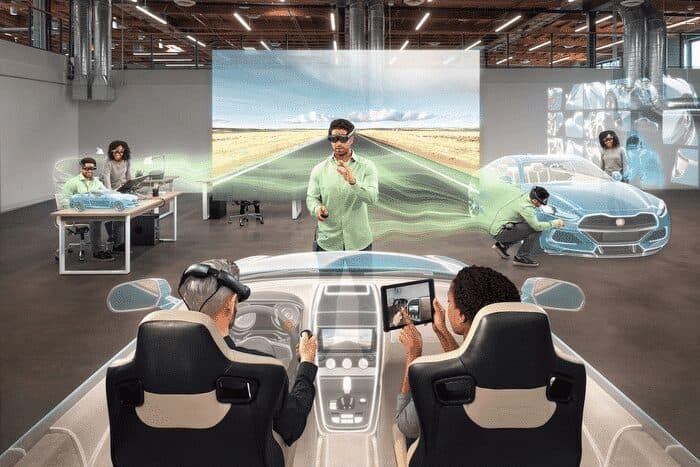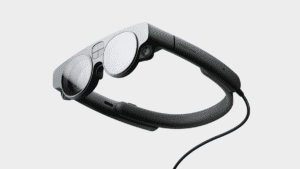Can Magic Leap succeed the second time around with the new Magic Leap 2? The troubled company raised billions in funding and originally released its first mixed reality headset in 2017. There were lots of promises, no demos, and when we finally had the device in our hands, we were faced with a lack of content, short battery life, and a narrow field of view that often killed the sense of immersion.
Despite the stumbles, there were fascinating projects that came out of the original release. Mica, the full-bodied, AI-driven avatar, still serves as a fascinating glimpse into the future Metaverse. The alien animal husbandry of Strangelets and the creative aspects of Madefire Comics were innovative instances of mixed reality combining different media forms.
But facing sluggish sales and a conflicting vision – is this for enterprise or an entertainment device? – the company almost folded in 2020, laying off staff and desperately seeking a partnership. You wouldn’t be faulted for counting them out, but now they’re back with a new Magic Leap 2 headset. Magic Leap CEO Peggy Johnson broke the news today on CNBC’s Power Lunch session.
The Magic Leap 2
With a promised Q4 release, we still don’t have many details. Here’s what we know from Road2VR:
Most interestingly, perhaps, she said Magic Leap 2 will be an “all day, every day” device, thanks to a more compact and comfortable form factor. This is intriguing because—if “all day” is to be believed—it suggests the headset will have significantly more battery life than the three or so hours of the original Magic Leap headset . . . .
. . . . But bulk and battery life isn’t the only barrier to true practical ‘all day’ use. In an image of Magic Leap 2 released today we can see that the headset will still bring a notable penalty to one’s own field-of-view, similar to the original Magic Leap headset which significantly truncated the real-world FOV.
While Johnson didn’t share the performance specs, she promised the Magic Leap 2 would incorporate significant upgrades:
Johnson also claimed Magic Leap 2 will include a new “segmented dimming” technology which she says will allow the headset to be practical in brighter environments, like an operating room. She didn’t elaborate on how it worked.
Magic Leap 2 will also feature improved “color fidelity,” “text legibility,” and “image quality,” according to Johnson, as well as “double the field-of-view.” We take this to mean ‘double the area‘ which is less significant than doubling the diagonal field-of-view, but it would be an improvement none-the-less, likely bringing Magic Leap 2’s field-of-view on par with HoloLens 2.
XR Today struck a more positive note on the improvements:
- Device weight – The new Magic Leap 2 will be a significant 20% lighter, weighing approximately 252 grams. For comparison, HoloLens 2 from Microsoft is almost twice as heavy at 566 grams, and even Oculus Rift weighs 417 grams. Leap 2 promises to be a lightweight addition to the XR devices available today, making this one of its most prominent differentiators.
- Field of view – the Magic Leap 2 will have twice the field of view, which means approximately 100°-153° flexibility of movement. You can expect even more naturalistic movements than Leap 1, ready for use across diverse enterprise use cases.
- Form factor – The Leap 1 wasn’t bulky, to begin with, but did include a thick band of around 1-inch that clasped around the sides and back of the user’s head. The glasses themselves were nearly twice as large as your standard-issue spectacles. At 50% smaller, we’d expect the Magic Leap 2 to be even closer to the AR glasses aesthetic, without compromising on performance.
The real issue will be the all-day use, and it’s unclear if that means it is comfortable to wear all day and only use in specific instances or if it is on all day, keeping you immersed in a virtual environment.
The Implications for Enterprise and Education

If the Magic Leap 2 is indeed an all-day mixed reality device that can be used in bright environments, it would be a breakthrough for enterprise use and workforce training. And engineering schools and healthcare education would benefit significantly. But many questions remain, including cost and device/content management. As eager as everyone is for effective solutions, no one wants to expand their current portfolio of problems.
There’s another issue here which no one has mentioned in covering the Magic Leap 2 release – the pending arrival of AR Glasses. While Facebook’s Ray-Bans are not AR, they reveal Facebook’s focus on augmented reality. And Nreal is already there with consumer-style glasses and continuing to expand their presence. Will mixed reality glasses like the Magic Leap 2 have a significant market if AR devices offer some of what they do at a lower cost?
We’ll be following the release of the Magic Leap 2 closely. 2022 promises to be a fascinating year for AR and mixed reality devices as we take another step closer to the long-promised Metaverse in our future.
Emory Craig is a writer, speaker, and consultant specializing in virtual reality (VR) and generative AI. With a rich background in art, new media, and higher education, he is a sought-after speaker at international conferences. Emory shares unique insights on innovation and collaborates with universities, nonprofits, businesses, and international organizations to develop transformative initiatives in XR, GenAI, and digital ethics. Passionate about harnessing the potential of cutting-edge technologies, he explores the ethical ramifications of blending the real with the virtual, sparking meaningful conversations about the future of human experience in an increasingly interconnected world.

